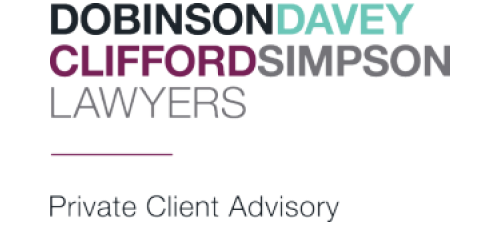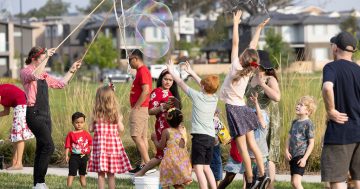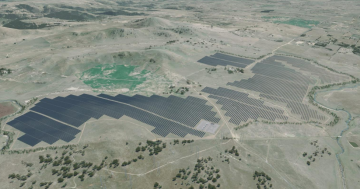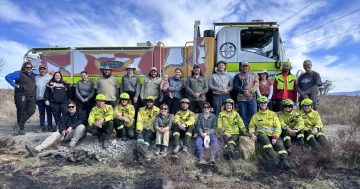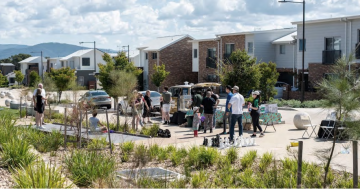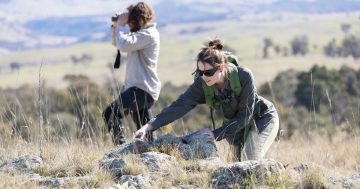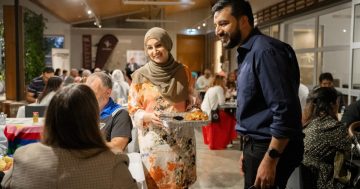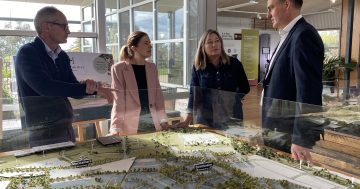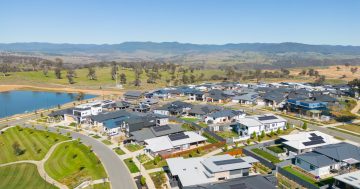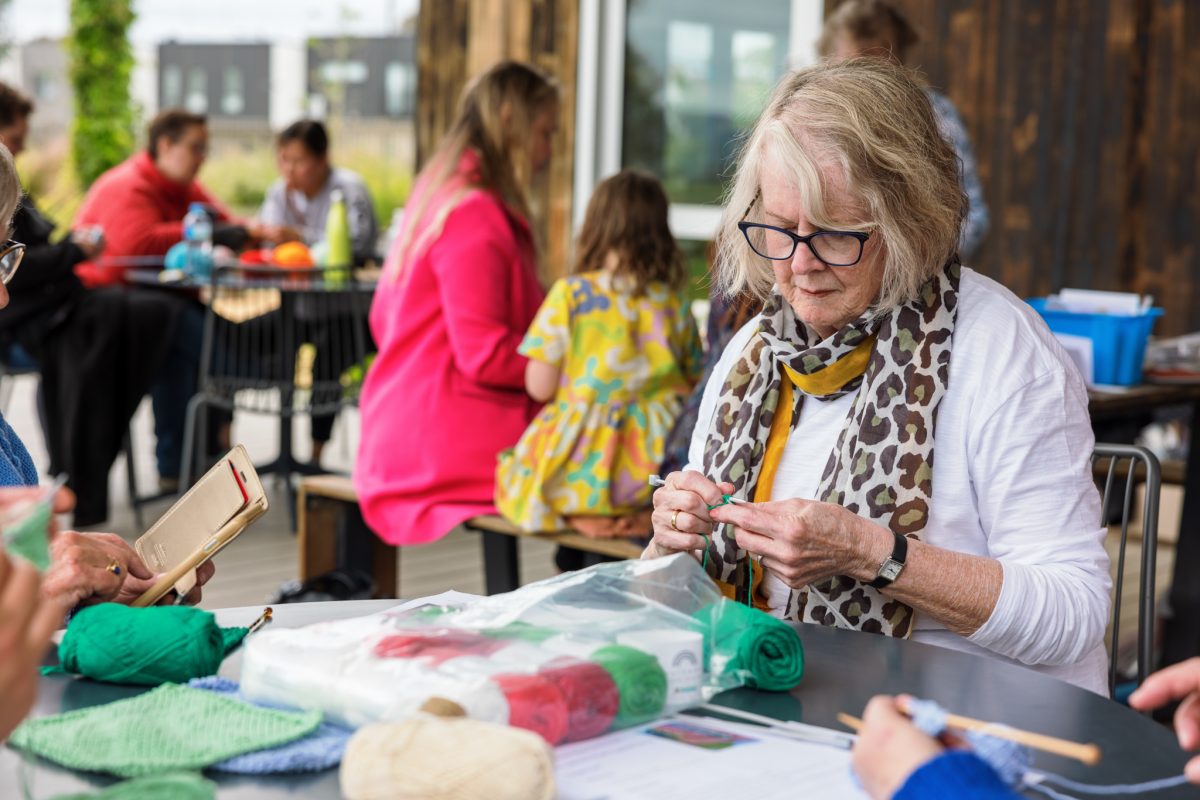
Ginninderry community activations are designed to create welcoming and belonging communities. Photo: Ginninderry.
As COVID-19 has shown us, friendship and bringing people together really matters, regardless of where you live. And, while it is a difficult thing to confront, a surprisingly high number of Australians are quite lonely and socially isolated, especially post-lockdowns.
Relationships Australia national executive officer Nick Tebbey says loneliness was a trend: people were feeling more lonely pre-pandemic.
“We had done some research that showed that right across Australia and across different age groups, loneliness was becoming a more pervasive problem and something that we really needed to do something about as a society,” Nick says.
“I think that the pandemic has really brought that into sharp focus for everyone. It’s broken down some of the stigmas as we’ve seen in talking about things like loneliness, about our anxieties, about our mental struggles, that we were more aware of what’s happening. And I think there’s more of an appetite there to do something about it, which is a good thing.”
Nick says a great deal of research highlights not only the mental health impacts of loneliness but also the physical consequences.
One particular report says people who are chronically lonely have similar impacts on their physical health as if they were smoking 15 cigarettes a day. The impact loneliness has on people’s lifespan, health and wellbeing makes it a serious issue.
“We see people who are lonely have more presentations to their GPs, and have more physical health issues that impact their livelihood,” Nick says.
“And then of course, on top of that, we know that loneliness adds to mental illness – it really creates a melting pot of issues for people who then need community and social support to help break out of that.”
So how are we trying to solve the problem and what’s working so far? Nick says there is a range of different approaches.
“There’s been a move, through GPs and other practitioners, to identify when people maybe don’t need a medical response but need a social response,” he says. “And so there’s a new move called social prescribing, which is all about encouraging people to go out and make connections.
“But for that to work, there needs to be a community for people to connect with and there need to be opportunities for people to reach out in a non-confrontational way, in a way that doesn’t put a huge toll on them but is available and is present and so the more that community and society actually take steps to breed welcoming and belonging communities, the better for everyone.”
Nick says it comes down to having social opportunities available for people who want to take up those options.
“And for all of us being present in our community or with our loved ones. With our family it means checking in and knowing what’s happening and being available, but doesn’t require us to go outside of our comfort zone to host dinner parties or backyard events and things like that. It’s about doing what’s right for us. But first of all, we need a community that creates that space for that to happen.”
Ginninderry community development manager Tulitha King says community has been integral to the planning for Ginninderry.
“Ginninderry has a six-star Green Star community rating, which actually mandates that we need to have a community development manager and steering group – that’s where my role began,” she says. ”But thinking from a planning perspective, we needed to look at how people move around the suburb.
“So if we plan for children and older people, we’re covering a cross-section of society. If you make it really easy for people to connect throughout their suburb using great cycleways and pedestrian ways and also public parks and green areas, that creates something called a third space and an opportunity to have some incidental meeting places occurring. Public places do that in such an important way so we really need to make sure our suburbs have great public spaces.
”Then there are things like social infrastructure. I would call them that because they actually also create the same opportunities. And there are things like public markets and other initiatives that have come around the world, like park runs, and things like the Repair Cafe as well, that’s another opportunity for people to just bump into other people and localising communities as much as possible.
“We try and have a lot of things happening at Ginninderry that people can actually tap into as they want to, and then meet the people in the neighbourhood and within their community.”
Ginninderry also has the amazing conservation corridor on its doorstep, providing another incidental meeting place for people who are more inclined to connect with nature than people.
Listen to the full interview hosted by Region Media’s Genevieve Jacobs on the Inspire podcast.





